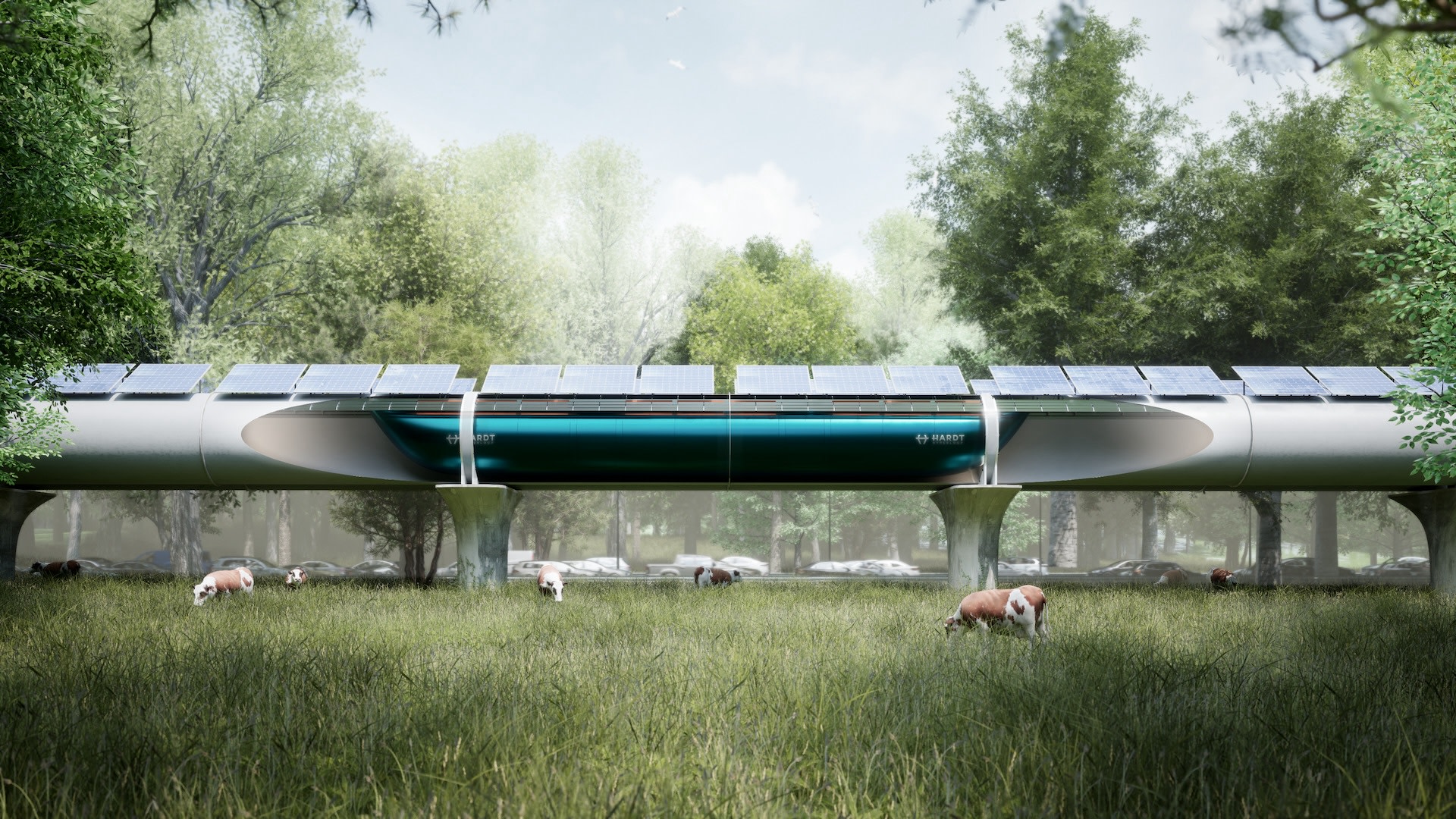
Photo Credit: Hardt Hyperloop
A hyperloop sounds like something in a sci-fi movie that transports people at warp speed across galaxies in minutes. While a hyperloop on Earth won’t take you to a galaxy far, far away, it could take you from Los Angeles to San Francisco in less than an hour.
Hyperloop technology hit “a significant milestone” recently when the longest testing tunnel in Europe opened in the Netherlands. The European Hyperloop Center features a 420-meter (almost 1,400-foot) tube with lane-switching capabilities, making it stand apart from other hyperloop testing facilities.
What is a hyperloop? It’s an idea that goes back a couple hundred years, but it got a boost in popularity in 2013 when Tesla CEO Elon Musk published a research paper on the topic. In it, Musk claimed that a hyperloop tube could transport people from L.A. to San Fran in just 35 minutes — a trip that usually takes six or seven hours.
The concept behind the futuristic transportation system consists of giant tubes or tunnels with pods cruising through them at incredibly high speeds — over 700 miles per hour. Different technologies are being tested, but the general idea is to reduce friction using magnetic levitation or air skis instead of wheels and with low air pressure inside the tube.
Hyperloop technology is gaining speed because of the projected benefits over traditional planes, trains, and automobiles.
Traveling at those speeds would seriously cut down on people’s commute times, and the tickets would be significantly cheaper than the price of a flight. According to Interesting Engineering, building the infrastructure is estimated to be cheaper than high-speed rail.
“It is incredibly energy-efficient, using only 10% of the energy needed for roads and aviation, and 50% less energy than rail,” according to Hardt Hyperloop, the company that built and operates the facility.
Finding cleaner ways to get around that aren’t fueled by dirty energy sources is vital to cooling our planet. In 2022, the transportation sector was responsible for almost a third of air pollution worldwide. Not only is vehicle pollution directly related to our drastically warming climate, but it’s also creating poor air quality in our neighborhoods.
Particle pollution created by burning dirty energy sources like oil, coal, and gas is associated with a higher rate of death from cardiovascular and respiratory diseases and lung cancer.
The EHC is part of the Hyperloop Development Program, which includes more than 25 public and private partners. It’s also an open test facility, meaning businesses are free to test their technologies in the EHC infrastructure.
“This center acts as a hub for refining and validating the open specifications, allowing various stakeholders to contribute to the ongoing evolution of hyperloop technology,” Hardt says on its website.
This technology is still in its infancy, so we have a long way to go before we’re whisked away to far-off lands in tubes. It’s difficult to give a realistic timeline at this point, but the fact that initial tests are being conducted shows a lot of promise for the future of hyperloop transportation.
Join our free newsletter for weekly updates on the coolest innovations improving our lives and saving our planet.
link

